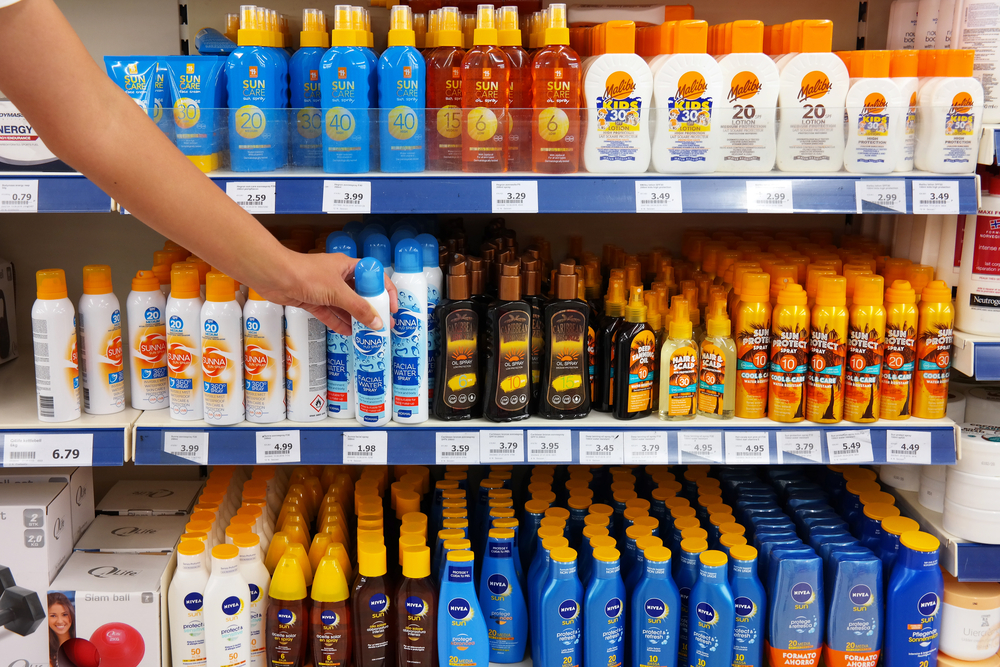Are European Sunscreens Better Than Those in the U.S.?

Sunscreen is no longer just the thick, stinky goop that leaves a white film on your skin. Now, everything from tinted moisturizers to chapsticks to delicate mists for your face claim to protect against some kind of sun exposure. And though the kinds of products that offer sun protection have exploded in the U.S., customers in Europe, parts of Asia and Australia have more effective formulas lining their store shelves. The difference comes down to how various governments regulate sunscreen.
Decoding Sunscreen Labels
Sunscreens protect against two kinds of radiation: Ultraviolet A and Ultraviolet B, types of energy that lie just outside the range of wavelengths that we can see. UVB burns skin and moves through our skin cells directly into DNA, meaning it helps trigger genetic changes that lead to skin cancer. For a long time, active ingredients in U.S. sunscreens protected against UVB specifically. The packaging label SPF — sun protection factor — speaks to the kind of UVB shielding a sunscreen has and how well it prevents a sunburn.
UVA rays don’t trigger burns but they also interfere with our DNA. In 2011, the Food and Drug Administration introduced rules around the term “broad spectrum,” which refers to how well the sunscreen protects against UVA exposure.
That the Food and Drug Administration ultimately decides which sunscreen ingredients can be sold and how packages are labeled is the first indication of how sunblocks are treated differently in the U.S. Here, sunscreens are regulated as if they are over-the-counter medications. The European Union, however, approaches the products like cosmetics, and in Japan, regulating bodies see them as something between a cosmetic and a drug. The medication classification in the U.S. means more stringent oversight. If brands want a new active ingredient — called a UV filter — to get approval, they have to collect more data to be deemed safe for use in people.
U.S. regulations also set different benchmarks for product labeling and advertising. This is particularly true when it comes to the “broad spectrum” label. In the U.S., that title refers only to protection against UVA light, a range of wavelengths that run from 320 to 400 nm in size. For a sunscreen to be “broad spectrum”, it has to mostly protect against 370 nm wavelengths or smaller. In Europe, “broad spectrum” also refers to the quality of UVB shielding. Brands earn the right to use “broad spectrum” if laboratory measurements of UVA protection are at least a third the values of laboratory measurements of UVB protection.
How Rules Shape Store Shelves
Experts think the differences between international and U.S. sunscreen standards come with two consequences. The first is that U.S. standards for “broad spectrum” might be setting too low of a bar for protection against UV. “The pass/fail methods of UVA testing in the USA are thought to be more lenient than the standards utilized in Europe,” writes Katherine Glaser and Kenneth Tomecki, dermatologists with the Cleveland Clinic, in a recent book chapter.
In 2017, researchers put this possibility to the test by analyzing the UV blocking ability of 20 sunscreens for sale in the U.S. Though 19 of the 20 products for sale met U.S. standards for “broad spectrum,” only 11 met European standards. In a side by side comparison of two options — one that met European standards and one that didn’t — the former protected against the same range of wavelengths while absorbing more of each wavelength as well.
Additionally, the rigorous process the FDA requires for UV filter approval has some dermatologists (and the sunscreen industry) suggesting that U.S. approval protocols get in the way of better, more desirable sunscreens reaching people. “Because the US sunscreen manufacturers do not have access to these new UV filters, there is concern that US sunscreen may not offer broad-spectrum UV protection comparable to those in other parts of the world,” wrote Henry Lim, a dermatologist at Ford Hospital in Detroit, with colleagues in the American Journal of Clinical Dermatology.
A handful of UV filters available outside the U.S., which has the fewest number of approved options, have been waiting for the green light for years. In 2014, the U.S. passed legislation that gave deadlines by which the FDA had to assess each option, but the law didn’t change how the FDA vetted candidates — just how fast the agency had to act. Ultimately, no new UV filters have been approved since the law kicked in.
In 2019, the FDA proposed some more changes to sunscreen rules. The agency opted to label a couple active sunscreen ingredients that are in use elsewhere in the world as “generally recognized as safe“, meaning brands can sell products with those two UV filters. There’s a much longer list of potential sunscreen ingredients waiting for FDA action, however. And the quality of what’s on your store shelves depends on how quickly the agency moves.
